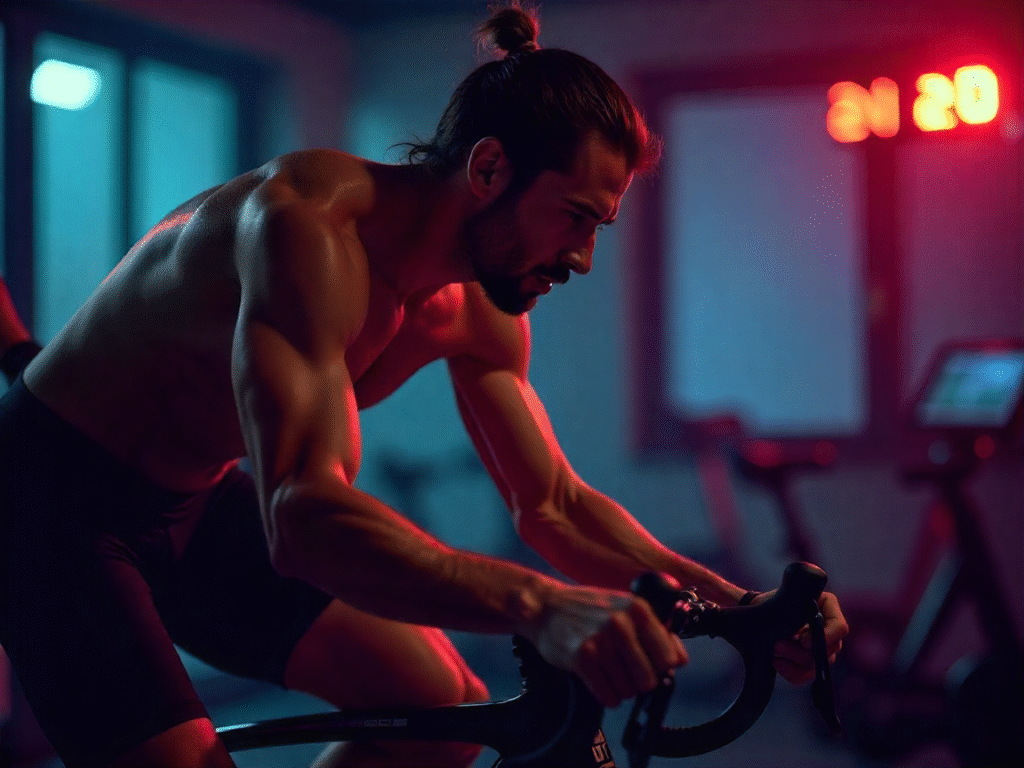The Best Fluffy Pancakes recipe you will fall in love with. Full of tips and tricks to help you make the best pancakes.
How to Build Consistent Indoor Training Habits
Look—I’m going to be brutally honest here. Most people who buy indoor bikes? They quit. Not because they’re lazy (though that’s what they tell themselves at 2am scrolling Instagram), but because they’ve built this elaborate obstacle course between thinking “I should ride” and actually… riding.

Every. Single. Barrier. Matters.
Think about it like this: when you’re already negotiating with your brain about whether to train—and trust me, that negotiation is happening—each extra step becomes ammunition for the quitter inside you. Need to find your shoes? That’s 30 seconds for your brain to whisper “maybe tomorrow.” Can’t remember which workout you planned? There goes another two minutes of mental wrestling. Before you know it, you’ve spent 15 minutes NOT riding, and suddenly Netflix sounds way more appealing.
The cyclists crushing their goals aren’t superhuman, they’ve just removed the stupid, unnecessary friction that kills momentum before it starts. Here’s how to fast-track past the parts where everyone else gets stuck.
Just Stop Deciding What to Do (Seriously, Stop It)
You know what wastes more time than the actual workout? The paralysis of standing there, staring at your bike, wondering “threshold intervals or endurance ride?” while your motivation evaporates like water on hot pavement.
Here’s what changed everything for me—and I mean EVERYTHING: pre-decided training blocks. Monday is always aerobic work. Wednesday is always intervals. Friday? Easy spinning, no exceptions, no debates. The decision was made weeks ago, possibly months ago, and present-me doesn’t get a vote.
Real talk: my friend Alex (software developer, three kids, perpetually exhausted) struggled with consistency for almost three years. THREE YEARS. He’d get home, open Zwift, spend 20 minutes browsing routes like he was choosing a Netflix movie, then… nothing. Just gave up. The moment he started following a predetermined weekly structure—literally just a Google Doc that said “do this today”—his completion rate went from maybe 35% to over 90% in five weeks.
Same guy. Same bike. Same busy life. Different system.
The magic here isn’t discipline (discipline is overrated anyway), it’s automation. You’re not building willpower—you’re building a railroad track that your brain just follows because, well, that’s where the tracks go. All that energy you were burning on decisions? It goes into actually pedaling now, and boom—results compound faster than you’d think possible.
The 90-Second Rule (Or You’re Doing It Wrong)
Listen… setup friction is the silent killer nobody talks about. Finding your shoes (where did I put them?), connecting the heart rate monitor (why won’t it pair?), hunting for earbuds, adjusting the fan, filling water bottles—individually these feel like nothing, but collectively? They’re a 10-15 minute gauntlet of “maybe I’ll just skip today.”
Here’s the non-negotiable standard: 90 seconds maximum from decision to pedaling. Not 10 minutes. Not 5 minutes. Ninety seconds.
This requires some upfront work, yeah—but it’s worth it (trust me on this one). Your kit lives in ONE spot, not scattered across three rooms. Shoes stay clipped to pedals. Electronics? Pre-charged, positioned, ready. Water bottles filled the night before—this is crucial because morning-you is an idiot who will absolutely use “need to fill bottles” as an excuse to bail.
My buddy Jamie installed this little shelf thing next to her bike, everything labeled in containers. Heart rate strap. Towel. Gels. Remote. Reduced her setup from like 15 minutes (which she didn’t even realize was that long!) to under 90 seconds. Over six months that translated to 20+ extra completed workouts she would’ve absolutely abandoned during the setup phase. That’s a whole extra MONTH of training.
The psychology here is sneaky but powerful: once you’re on the bike spinning, even for 30-45 seconds, you won’t quit. But during setup? Your brain is still offering exit strategies, escape hatches, reasonable-sounding excuses. Compress that danger zone, skip past it before resistance mobilizes, and you’re golden.
Forget Perfect—Just Show Up (This One’s Big)
The all-or-nothing mentality has killed more cycling dreams than bad knees ever will. You plan 90 minutes, life happens (because life ALWAYS happens), suddenly you’ve only got 35 minutes, so you do… nothing? Zero?
That’s insane when you think about it—but we all do it.
Instead: establish your minimum viable session. Not your ideal workout, not your optimal training stimulus—your absolute unbreakable floor. For most people this is like 15-20 minutes. Brief warmup, some moderate effort, done. The specific protocol almost doesn’t matter compared to the psychological win of maintaining continuity.
Rebecca—ER nurse, completely unpredictable schedule—abandoned her cycling goals three years running (honestly heartbreaking to watch) because she couldn’t maintain her planned hour-long sessions. Once she committed to a 15-minute minimum that she could extend when possible? Her monthly sessions jumped from averaging 5-6 to 18-19. Her annual volume actually EXCEEDED her previous ambitious plans because consistency replaced perfectionism.
Eight months later she did a century ride. A century! The thing she’d been dreaming about but convinced herself was impossible because she “didn’t have time to train properly.”
This works because—and this is counterintuitive—the most valuable training stimulus isn’t physiological stress. It’s psychological reinforcement. Every completed session, regardless of duration, strengthens your identity as someone who shows up. You’re building evidence for yourself, an unbroken chain of “I do this,” and eventually longer sessions become easier because you’re working from trust instead of a history of broken promises to yourself.
Stop Overthinking, Start Riding
These three approaches share one philosophy: remove obstacles BEFORE they become problems. Engineer your environment so consistency is inevitable rather than heroic. You’re not trying to become more disciplined—you’re making discipline irrelevant.
The gap between cyclists who achieve their goals and those who don’t? It’s not talent, it’s not time (everyone’s busy), it’s the intelligent elimination of friction points. Every unnecessary step you remove compounds across hundreds of future sessions, preventing countless moments where you could’ve quit.
“Indoor Gains: The Ultimate Home Cycling Plan” cuts through the nonsense and gives you the complete system for engineering frictionless training that actually sticks. Stop leaving success to motivation (motivation is unreliable) and get the blueprint that transforms occasional riders into consistent cyclists who crush their goals. Grab your copy now and fast-forward past all the trial-and-error that wastes months of your life. Get Here.
Also Check our Full Indoor Cycling Guide for more tips and info !





